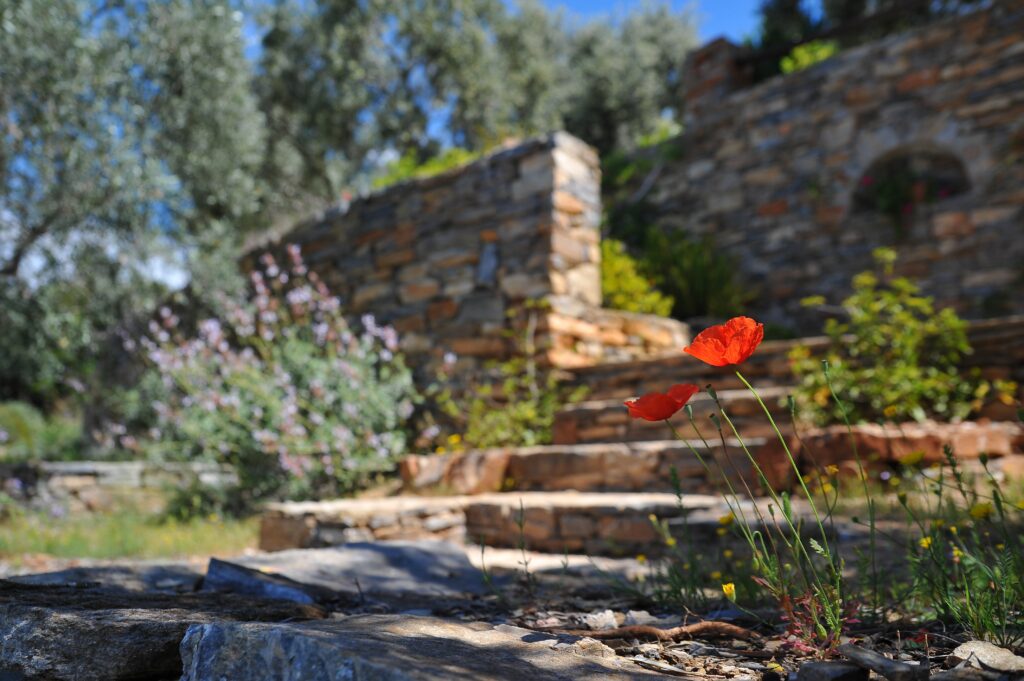
Your landscape is the first thing guests or home buyers see and consider when they visit your home because it helps increase curb appeal and property value. Therefore, you should invest in making it functional and visually appealing.
Landscaping can be an enjoyable but tiresome and time-consuming undertaking. While some might DIY the project, you should consider calling a St. Louis landscaping company for the complex jobs to avoid ruining it and the final results.
Landscaping St. Louis experts can also help with expert advice on improving your DIY results or give you design inspiration. Allen Outdoors Solutions, a reputable St. Louis landscaping company, breaks down the most essential things you should know about landscaping without overwhelming you.
Types Of Landscapes
The first thing you must decide, according to landscaping St. Louis companies, is the type of landscape you want. It should match your personality needs and be compatible with where you live. Different styles or designs have pros and cons, and you should consult a St. Louis landscaping company.
Tropical
Also referred to as an oriental-style garden, this design is primarily characterized by rocks, water features, and plants with bold colors and lush greenery. If you are in an appropriate climate, landscaping St. Louis professionals recommend you include tropical plants like palm trees, orchids, hibiscus, and bougainvillea.
You can also add a hammock, fire pit, waterfall, swimming pool, bamboo accents, and torches.
Woodland
This is an excellent design if you want one with low maintenance. It primarily consists of trees, shrubs, floral plants, and shrubs from forests like cherry, maple, and oak trees. You can also include fast-growing softwoods like juniper, redwood, Douglas fir, and cedar.
English
This design primarily majors on adding various plant types like shrubs, floral plants, and other long-lasting ones. St. Louis landscaping professionals recommend you add water features like fish ponds or pergolas.
Japanese
St. Louis landscaping companies suggest this style for people who want a peaceful atmosphere. Its primary elements include rocks, water, plants, and decorative ornaments.
The main focus is usually on ponds and waterfalls created using stones and a wooden bridge. You can also add bamboo and traditional Japanese spiritual concepts like Buddhist drawings.
Spanish
Landscaping St. Louis experts recommend this for hot and dry climates. Inspired by Islamic and Persian garden styles, the style primarily focuses on drought-tolerant plants.
Structural features like fountains, pools, walls, and benches are usually made using ceramics. Also, if you incorporate a fountain, use a small one instead of the large centerpiece ones.
French
This style is heavily inspired by the Italian Renaissance style with a few unique touches. Its main characteristic is planting shrubs or trees in straight lines leading to the home. You can also include cat-iron furniture, fountains, birdbaths, and columns.
Tuscan
The main elements to incorporate in this style include potted herbs, citrus plants, a labyrinth, and a pergola or arbor.
Desert
This is another low-maintenance landscape style that gives your home a unique and beautiful touch. Succulents are the main element, and you can add color using desert-tolerant plants like yellow columbine, autumn sage, and begonia. You can add heat-resistant furniture, a fire pit, shade, and an outdoor kitchen.
Prairie
If you are not a fan of tall trees, you can achieve this style using herbaceous flowering plants and tall grasses.
Landscaping Task For Different Seasons
Taking care of your landscape is an all-year job, but different St. Louis landscaping tasks are suited for different seasons to maintain everything in good shape.
Spring
This is the season where the lawn is at its peak, with the best conditions to promote plant growth. You will see a massive transformation from dull and dead winter plants to lush and colorful plants. Below are the things landscaping St. Louis companies recommend you should do for your landscape.
- Apply fertilizer after the snow melts
- Remove weeds
- Clean up your yard
- Apply pest control
- Test the soil to determine moisture content, pH, and nutrients
- Repair dead patches
- Aerate and dethatch to revive weak lawns
- Remove old mulch and winter trunk protection and re-mulch
- Prune summer-flowering plants
- Rake and groom ground covers
- Remove dead or diseased branches
- Divide overcrowded perennials
- Repair cracks in paved areas
- Refresh gravel as needed
- Clean and repaint outdoor furniture as needed
- Clean wooden decks
Summer
Your landscape will require more work to remain lush and healthy as the weather gets hotter.
- Mow your lawn regularly, setting your blade height to around three inches
- Water the grass and other plants regularly
- Conduct pest control
- Weed and mulch around your plants as needed
- Trim hedges
- Prune spring-blooming shrubs
- De-head faded flowers
- Train vines by pruning or tying
- Regularly check your plants for disease or insect damage
When mowing, leave the clippings on the ground as organic fertilizer. Remove only a third of the grass and increase the height as summer progresses because taller grass does better in the heat.
Fall
This is the last season before your lawn plants become dormant and could be the one requiring the most maintenance. While the turning colors beautify the landscape, the falling leaves can be a nuisance.
- Remove dead grass and leaves
- Add around an inch of compost and integrate it into the soil
- Seeding
- Apply fertilizer
- Use a garden trowel to break up and aerate the soil
- Mulch and water as needed
- Cut back rose canes
- Cut back your perennials to six inches over the soil
- Divide and replant overcrowded perennials
- Harvest vegetables
- Plant spring-flowering bulbs
- Compost a vegetable garden
- Plant cool-season annuals
- Drain pools, permanent water systems, and ponds
- Store outdoor furniture, tools, and hoses
Winter
While this season sees your lash plants covered in snow and become dormant, it does not mean no landscape work is required. Landscaping St. Louis companies insist that the work is necessary because it ensures the plants bloom during spring.
- Clean up the yard
- Keep off the lawn, as you could break your plants
- If the yard is still green, apply nitrogen fertilizer during late winter
- If there is no rain or snow, water your newly planted evergreens
- Prune bare-root roses
- Use burlap to wrap tender foundation shrubs
- Use tree guard to wrap your trees to prevent rodent damage
- Review winter bulbs and throw away the rotten or soft ones
- Apply a fast-acting fertilizer to the plants if you are in a mild winter region
- Check for cracks in your irrigation systems and winterize them
Tips For Designing Your Outdoor Space
Your landscape design determines its curb appeal, functionality, and space usage. Therefore, if you plan on doing it yourself, here are some tips from St. Louis landscaping experts to help you achieve near-professional results.
Determine a Purpose
Determine why you want to upgrade your landscape. It could be you are looking for a place to relax, hold parties or BBQs, play with your pets and kids, or increase property value.
That helps you decide what to add to the landscape and how to use the space effectively.
Pick a Theme
Your outdoors should reflect your taste and match the purpose of your landscape. It also helps you determine which landscaping features to add.
Consider Your Assets
Every landscape has its pros and cons depending on the shape and orientation. St. Louis landscaping companies advise you to note your landscape’s strengths and use those to offset the weaknesses.
If, for example, you have a large outdoor space, you can spice it up and break it down using pathways, plants, or furniture. On the other hand, if you have a slim city balcony space, you can decorate it using hanging plants.
Select The Materials
The materials you choose for your hardscape features determine their appeal, durability, cost, and maintenance. The most important thing is to ensure the materials are suitable for your environment to prevent them from getting damaged by weather elements.
Position Wisely
You might have a spacious and beautiful landscape, but how you position your hardscape and softscape features could make or break it. St. Louis landscaping professionals recommend dividing the space into sections, regardless of its size.
That way, you will have a free-flowing orientation that maximizes the landscape’s usability. For example, you can create separate dining and seating areas, separate from your garden, but with some unifying features like plants.
Use Seasons As Inspiration
Decorating a landscape is more challenging than it sounds, and you could find yourself with too many options or none. In both situations, landscaping St. Louis experts advise using different seasons to inspire the decor. For example, you can use bright colors in spring and summer and more earthy tones in fall.
Connect The Outdoors With The Indoors
Letting the outdoors be an extension of your indoors creates a uniform and well-balanced home. Pull textures and colors from your interior and incorporate them into the exterior.
Landscape Design Principles
St. Louis landscaping companies use a set of principles when designing landscapes to determine the landscape’s feel and control viewers’ eye movements.
Proportion
Proportion dictates that the size of individual or group components like structures and plants is consistent with the general landscape.
Transition
A well-proportioned landscape has an excellent transition between plants and structures to ensure none loses their appeal or is overshadowed. A five-foot-tall stone wall, for example, might elegantly complement a big house, but the same wall might make tiny houses appear even smaller.
Unity
Good proportion and transition give your landscape a unified feel, making everything seem like part of a big unit. One way to achieve unity is placing your plants based on their form, for example, when planting trees along a driveway.
Rhythm
This is the patterned motif repetition. Motifs in a landscape could include the plants you use. Planting the same plants in a hedge or row could encourage viewers to focus in one direction.
Balance
This refers to the visual weight and consistency of elements in the landscape. Landscaping St. Louis professionals advise that you can achieve that using repetition of the same color, shape, and size of plants evenly placed around a garden or structure. You could also achieve it by planting two big trees on either side of the house.
Focalization
This involves forcing your property viewers to focus on a particular place without making it look jarring. While there are many ways to achieve it, St. Louis landscaping companies encourage using consistent and balanced element arrangement.
Elements To Include In Landscape Design
Landscape design elements help landscaping St. Louis companies achieve design principles.
Color
This is the most vital element in every successful landscape design. You can use cool and warm flowers to achieve contrast or use cool or warm flowers for a uniform look. St. Louis landscaping experts recommend using the color wheel as an essential tool to help you determine which colors go well with others.
Form
Landscaping St. Louis professionals define this as a plant’s shape and branching pattern structure. Trees acquire many shapes, especially when pruned, and the structures could range from droopy to stiffy upright branches.
You can also consider the form of separate plant components, like the leaves from different trees.
Texture
This is primarily a visual element. Plants’ textures, for example, are mainly determined by their leaf sizes.
Line
This refers to border arrangement to dictate viewers’ eye movements. Eye movements primarily depend on how plant groupings flow or fit together on vertical and horizontal planes.
Scale
This is one component’s size relative to surrounding components.
Different Plants To Include In a Landscape
Landscaping plants make up the softscape features of your landscape, and St. Louis landscaping experts include them primarily to beautify your landscape. They also help reduce soil erosion and pollution, attract pollinators for other plants, and create a ceiling or floor for outdoor areas.
However, not all plants can fit your landscape, and landscaping St. Louis designers and architects consider different types depending on what you want to achieve.
Trees
These are the most popular plants used by landscaping St. Louis professionals. They are excellent for achieving a natural landscape and shading smaller plants. Some people love evergreen trees to maintain the foliage throughout the year.
However, others prefer trees that change with the seasons to enjoy their changing beauty.
Shrubs
Landscaping St. Louis designers and architects consider what you want to achieve in your landscape before suggesting suitable shrubs. They can be spreading, upright, molding, rounded, cascading, or arching.
Many St. Louis landscaping experts incorporate them as a way to show creativity and achieve different shapes in the landscape.
Annuals
These plants undergo complete life cycles from germination to seed production within a year, then die. Landscaping St. Louis professionals incorporate them because of their ornamental beauty.
Perennials
Unlike annuals, these can rebloom even after winter, meaning you don’t have to replant them. Therefore, landscaping St. Louis architects recommend them if you want low-maintenance but beautiful plants.
Grasses
Besides your lawn grass, you can add ornamental grass, which is taller than regular grass. St. Louis landscaping designers recommend they add texture and dimension behind short annual flowers.
Vines
St. Louis landscaping includes these plants mostly because they create ceilings and walls with necessary support.
Ground Covers
These are perfect if you want a natural carpet that will add color and dimension to the landscape.
Succulents
These are perfect if you live in a dry climate or want low-maintenance, all-year-round plants.
Hardscape Features
Landscaping St. Louis experts recommend these to add beauty, functionality, and texture to the landscape.
- Patios
- Fountains
- Fire pits
- Retaining walls
- Walkways
- Lighting
- Terrace gardens
- Pools and spas
If you’re looking for landscaping in St. Louis, give us a call at Allen Outdoors today!


